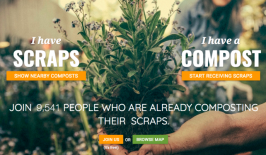Globally, around 13 percent of food produced is lost between harvest and retail, while an estimated 17 percent of total global food production is wasted in households, in the food service and retail, according to the UN.
This is far more than simply a matter of food waste management. Between 691 and 783 million people faced hunger in 2022, and 3.1 billion people do not have access to a healthy diet. According to FAO estimates, the food that is lost and wasted could feed 1.26 billion hungry people every year, making food waste a serious humanitarian issue. Sadly, it doesn’t end there. Wasted food is also estimated to account for 38 percent of total energy usage in the global food system.
How is this possible? Are we really throwing away a third of the world’s edible food?
What is food waste?
The history of food waste is closely linked to globalisation. In an ever more connected world, supply chains get longer, and everything is available everywhere — Indian mangoes in Germany and American apples in Indonesia — year round. On that often-long journey from farm to table, food is lost or wasted at every stage, and fresh foods such as fruits, vegetables, dairy and meat are particularly vulnerable.
“Food waste” and “food loss” are commonly used terms but don’t quite mean the same thing.
- “Food loss” typically refers to food lost in earlier stages of production such as harvest, storage and transportation.
- “Food waste” refers to items that are fit for human consumption but thrown away, often at supermarkets or by consumers.
According to Deutsche Welle, high, medium and low-income countries actually discard similar amounts of food. The global average for lower-middle-income countries such as is 91 kilograms, 76 kilograms in middle-income and 79 kilograms in high-income countries such as Ireland and the US. But, it’s important to note that there is a major difference in global food waste management between where and how that loss occurs.
In low-income countries, loss occurs more often in the earlier stages. For example, in Sub-Saharan Africa, 83 percent of food is lost during production, handling/storage and processing, while just 5 percent is wasted by consumers, according to the World Resources Institute. Conversely, in North America and Oceania, 32 percent is lost in earlier stages, and 61 percent is wasted by consumers.
Why is food lost?
Some food is lost before crops ever leave the farm. Reasons include:
- Farmers overplant to control for adverse weather and end up with surplus if conditions are favourable.
- Retailers’ high aesthetic standards for fruits and vegetables mean “non-perfect” produce might not even make it to the truck.
- In low-income countries, limitations in harvesting technology can result in damaged produce or poor yield.
In each case, crops are sold for animal feed or simply discarded.
But, produce is also lost after harvest, in handling, storage, processing and transport.
In low-income regions, the causes of food waste are often related to poor infrastructure, equipment limitations or insufficient cold storage. Imagine, for example, milk in Bangladesh transported by rickshaw to processing plants, exposed to the hot sun while slowly crossing narrow, bumpy roads. It is not uncommon for fresh fruits, vegetables, meat, dairy and fish to spoil in hot climates and become unsafe to eat.
In fact, according to experts from the University of Birmingham, the lack of a sustainable cold chain contributes to 4.4 billion GBP worth of fruit and vegetables being wasted annually in India. These issues disproportionately affect inhabitants of low-income countries as crop losses deny income for farmers and drive up prices for consumers. Food is, after all, already less abundant in these areas. According to the FAO, food production for human consumption, per capita, is approximately 460 kg per year in poor regions, compared to 900 kg in rich countries.
Why is food wasted?
It is exactly this abundance that contributes to food waste in industrialised countries. Consumer habits hold much of the blame, but food waste occurs all along the latter half of the supply chain with distributors, retailers and restaurants as well.
Reasons include:
- All-you-can-eat buffets and buy-one-get-one deals encourage people to buy more than they can eat, and disposable income means they can afford to waste the leftovers.
- Supermarkets refuse to stock produce that is odd-looking but otherwise perfectly edible.
Their rigorous standards are influenced by consumer behaviour, and in some instances, government guidelines. The U.S. Department of Agriculture (USDA), for example, assigns grades to many fruits and vegetables based on qualities such as size, shape, texture and ripeness. Retailers are not required to use these grades, but they often do and only stock higher-grade produce.
- Customers expect to find fully stocked shelves.
Shoppers want lots of options, and retailers don’t want to run out of anything. Unfortunately, this shelf stuffing encourages waste, since products are more likely to reach their “sell-by” dates while still on the shelf. At that point, markets must dispose of the surplus, and much of it is simply thrown away.
- Confusion over labelling.
Misinterpretation of labels such as “best by,” “sell by” and “use by” causes consumers to purge their refrigerators of perfectly edible food. What people might not realize is date labels are not generally regulated by governments but rather set arbitrarily by manufacturers. In the EU, for example, “best before” is simply a manufacturer’s best guess at how long a product is expected to retain optimum quality, while “use by” indicates the date until which the product should be consumed. According to the European Commission, an estimated 10 percent of the EU’s 88 million annual tonnes of food waste are related to date labelling.
The environmental impact of food waste
When edible items are discarded, it’s not just food that is wasted. Consider all the resources required to bring food from the farm to your table: water for irrigation, land for planting, fuel for powering harvest and transport vehicles. When a bunch of bananas falls off a truck or restaurant owners fill their rubbish bins with uneaten meals, all those resources are essentially wasted right along with the food.
Fresh water is one of Earth’s most precious resources, and 70 percent of it is used for agricultural purposes, including crop irrigation and drinking water for livestock.
Did you know the production of just one apple requires an average of 125 litres of water? That means throwing away a bruised apple is akin to pouring 125 litres of water down the drain.
The numbers with meat are even more staggering: 15,400 litres go into just one kilogram of beef. According to the FAO’s Food Wastage Footprint report, 250 km3 of water — three times the volume of Lake Geneva — is used each year to produce food that is ultimately lost or wasted.
Land is another of Earth’s valuable and limited commodities. 28 percent of the world’s agricultural area is used to produce food that is ultimately lost or wasted each year. Not only does that result in unnecessary degradation of land, but clearing land for agricultural purposes is also a cause of deforestation, which eliminates wildlife habitats and wipes out greenhouse-gas-absorbing trees.
The FAO estimates the carbon footprint of food waste is 3.3 billion tonnes of CO2 equivalent per year. Not only are oil, diesel and other polluting fuels used to power production machinery and transport vehicles, but greenhouse gases are also emitted by food waste itself.
Discarded waste rotting in landfills gives off methane, a potent greenhouse gas 25 times more efficient at trapping heat than carbon dioxide.
What can we do about it?
According to the United Nations, the world’s population is expected to swell from 7.6 billion to 9.8 billion by 2050. As food production struggles to keep up with the rapidly growing global population, food waste is predicted to grow — if we don’t do something about it.
Help reduce loss in handling, storage, processing and transport
In low-income countries, the keys lie in better training for farmers and public and private investments in infrastructure. Improved technologies in refrigeration and reliable, renewable energy sources can have a significant impact. For instance, a Kenyan company called VacciBox produces a solar-powered refrigeration system, helping to curb waste caused by disruptions in the cold chain. Another example is Edipeel, an organic, invisible coating used on produce that controls how much water and carbon dioxide the fruit releases and how much oxygen enters from the outside – meaning fresh produce stays fresh for longer.
Share the surplus
Supermarkets in industrialised nations can, and often do, donate unsold goods. UK retailer Tesco, for example, works with software platform FareShare FoodCloud to notify local charities about surplus food available for pickup. In France, it is actually illegal for supermarkets to discard unused food, and they are required to set up regular donations. They can seek it out at a market dedicated to reducing food waste, such as Germany’s SirPlus, which sells only excess food discarded by other markets or Denmark’s WeFood, which sells produce past its “sell by” date at about half the price of normal supermarkets.
An even more efficient approach may be to reduce unused food to begin with, through increased transparency in the supply chain and by establishing more efficient communications with farmers to reduce overproduction.
Turn waste into worth
There are already quite a few initiatives transforming leftovers into new products: turning coffee cherries into flour, producing award-winning ale from leftover bread, turning restaurant scraps into bioplastics and home food waste into biogas — essentially using food scraps to produce household energy.
Educate people on food safety
The food industry can work to streamline date labelling and increase consumer awareness about when food is still safe to eat. Public awareness and food waste education campaigns are vital to changing consumer attitudes and behaviours. Private initiatives too, can have an impact — like Mimica (formerly known as “Bump Mark”) a smart packaging solution made of gelatin tags that can be applied to meat and dairy packaging and “sense” when a food has truly gone bad.
Change consumer behaviour
Consumers can try to buy locally whenever possible (shorter supply chains equal fewer opportunities for loss), improve their meal planning, become informed about date labelling and only throw away food when it is truly inedible. Better yet, they can compost. Composting diverts waste from landfill and therefore reduces methane emissions. According to the FAO, home composting has the potential to divert up to 150 kg of food waste per household annually.
Updated in October 2023 by Lana O’Sullivan







